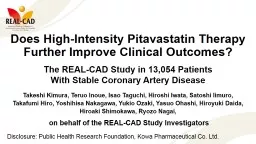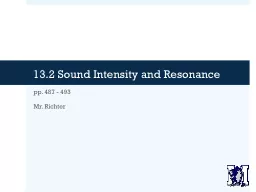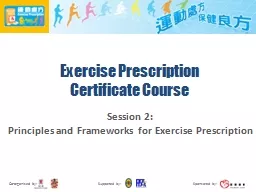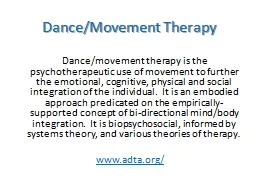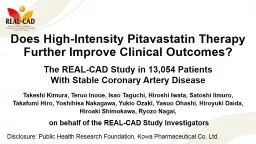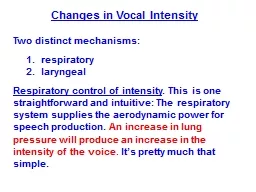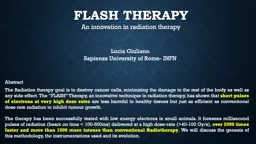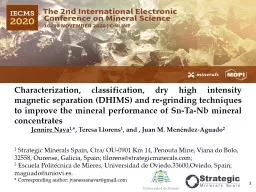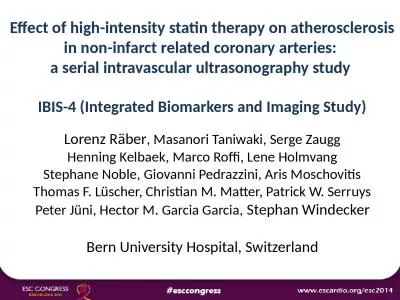PPT-Does High-Intensity Pitavastatin Therapy Further Improve Clinical Outcomes?
Author : luanne-stotts | Published Date : 2018-03-21
The REALCAD Study in 13054 Patients With Stable Coronary Artery Disease Disclosure Public Health Research Foundation Kowa Pharmaceutical Co Ltd Takeshi Kimura
Presentation Embed Code
Download Presentation
Download Presentation The PPT/PDF document "Does High-Intensity Pitavastatin Therapy..." is the property of its rightful owner. Permission is granted to download and print the materials on this website for personal, non-commercial use only, and to display it on your personal computer provided you do not modify the materials and that you retain all copyright notices contained in the materials. By downloading content from our website, you accept the terms of this agreement.
Does High-Intensity Pitavastatin Therapy Further Improve Clinical Outcomes?: Transcript
Download Rules Of Document
"Does High-Intensity Pitavastatin Therapy Further Improve Clinical Outcomes?"The content belongs to its owner. You may download and print it for personal use, without modification, and keep all copyright notices. By downloading, you agree to these terms.
Related Documents

